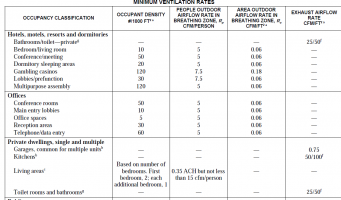Yikes
SAWHORSE
IBC/CBC 102.6 says "The legal occupancy of any structure existing on the date of adoption of this code shall be allowed to continue without change..."
A "Project Homekey" former hotel is being proposed for conversion into permanent apartments by adding kitchenettes. I say this represents an alteration, but is NOT a change in occupancy or use. The hotel was permitted under the 1988 code, when UBC 1201 group R, division 1 was "Hotels, motels and apartment houses".
1988 CBC 502 allowed changes in use as long as the use remained within the same division of the same occupancy.

The building official says no, we must evaluate changes in use/occupancy under the classifications of the current code, not under the code in which it was first built. Hotels in the 2022 CBC are R-1 and apartments are R-2. His example to me is this:
Who is correct?
When this building was constructed in 1988, you could have unlimited window openings in a Type V building that was 5' away from property line.
I'm concerned that a change in occupancy would require reducing the size of window openings in order to meet today's requirements.
A "Project Homekey" former hotel is being proposed for conversion into permanent apartments by adding kitchenettes. I say this represents an alteration, but is NOT a change in occupancy or use. The hotel was permitted under the 1988 code, when UBC 1201 group R, division 1 was "Hotels, motels and apartment houses".
1988 CBC 502 allowed changes in use as long as the use remained within the same division of the same occupancy.

The building official says no, we must evaluate changes in use/occupancy under the classifications of the current code, not under the code in which it was first built. Hotels in the 2022 CBC are R-1 and apartments are R-2. His example to me is this:
"If you look at “B” occupancy, Division 2 in 1988 UBC, you can see that it covers restaurants, wholesale, retail, office building, printing plants, municipal police and fire stations, factories, workshops, storage and salesrooms for combustible goods, paint stores, etc. Let’s assume a building was designed under 1988 and permitted for a factory. If someone wants to convert it to a retail, we will be asking for change of occupancy and change of use under 2022 CBC."
Who is correct?
When this building was constructed in 1988, you could have unlimited window openings in a Type V building that was 5' away from property line.
I'm concerned that a change in occupancy would require reducing the size of window openings in order to meet today's requirements.


